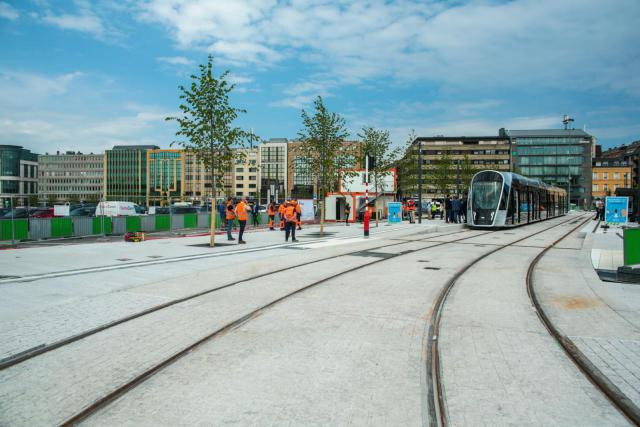Given this success, MP François Benoy (also déi Gréng) wanted to know more about measures to ensure there would be enough capacity to expand the tram network in future.
In his response to the parliamentary question, Bausch explained that since 3 June tram frequency had increased from every 6 to every 5 minutes, thereby allowing overall transport capacity along the line to increase by 20%.
Luxtram is expected to launch a recruitment campaign in anticipation of the third phase which includes the tram line extension to the main station. The tram fleet in turn is expected to increase from its current 12 to 27 wagons, when the line to the main station is added by end-2020, then to 33 in time to operate the Findel-Cloche d’Or route.
Frequency could then be increased to every 3 minutes, the minister added, while line 1 capacity could increase to “nearly 26,000 people with the acquisition of 56m-long trains”.
The minister also expects that the eventual 24 stations, including 10 interchanges, “will allow the tram to ensure excellent correspondence with other modes of transport,” adding: “This multimodal offer will impact travellers’ habits and generate net flows, ensuring a balanced distribution of travellers along the route in both directions.”
